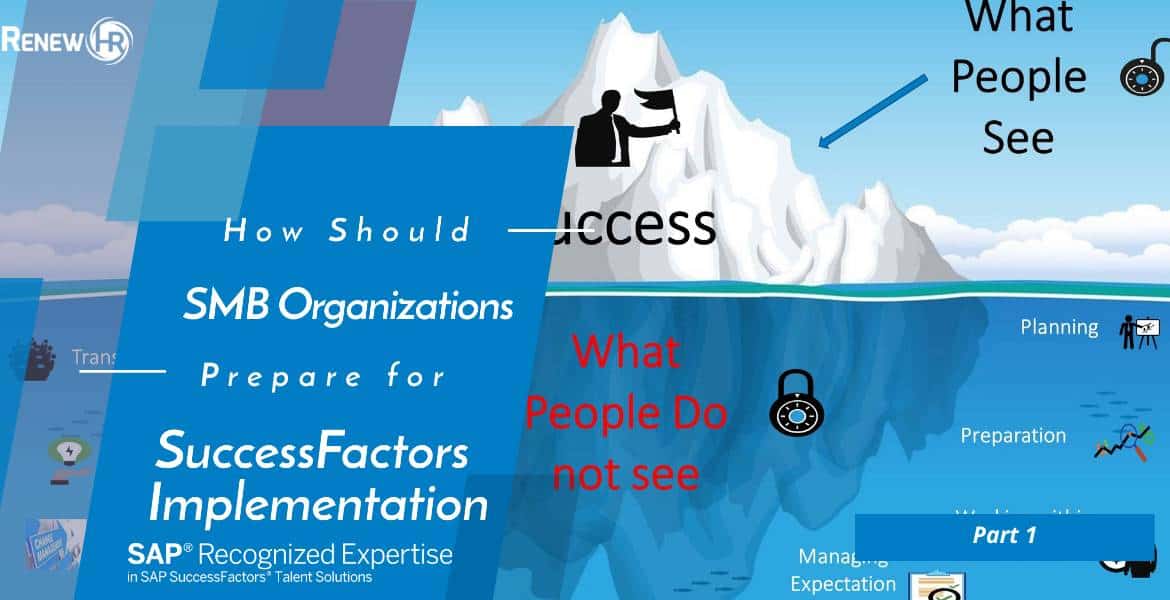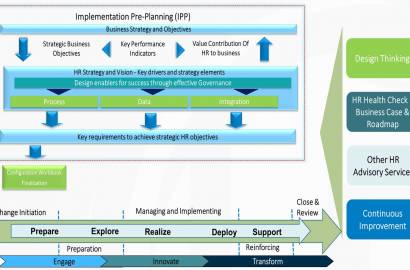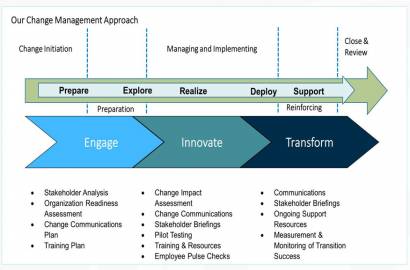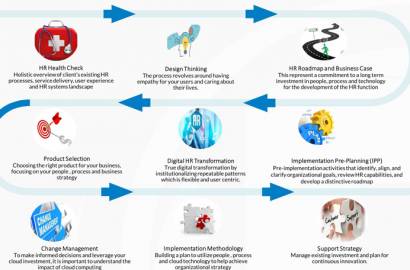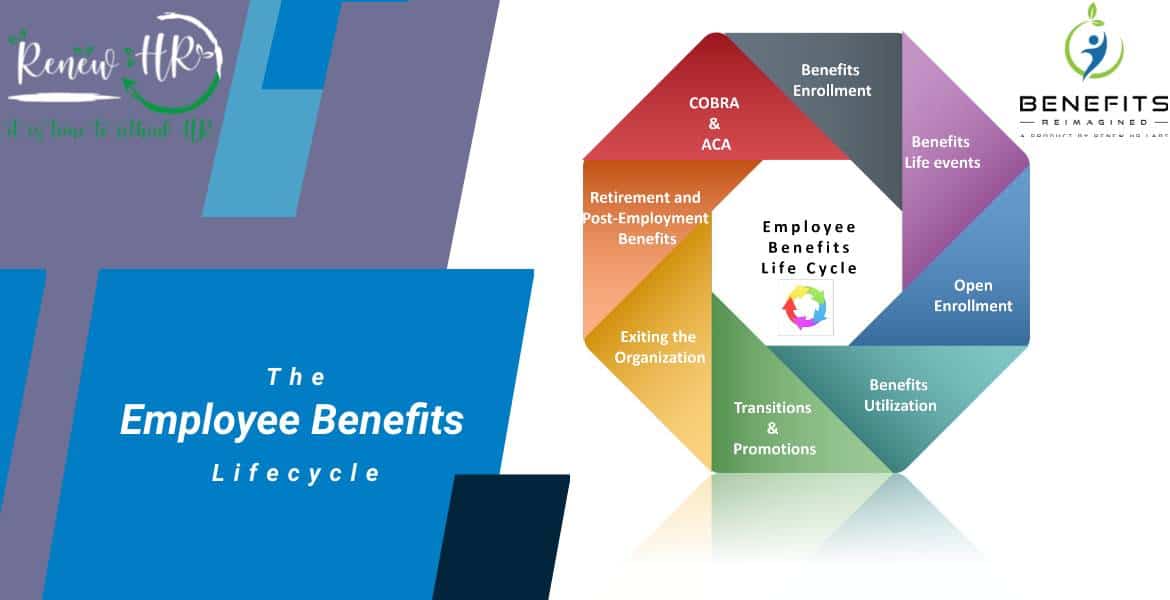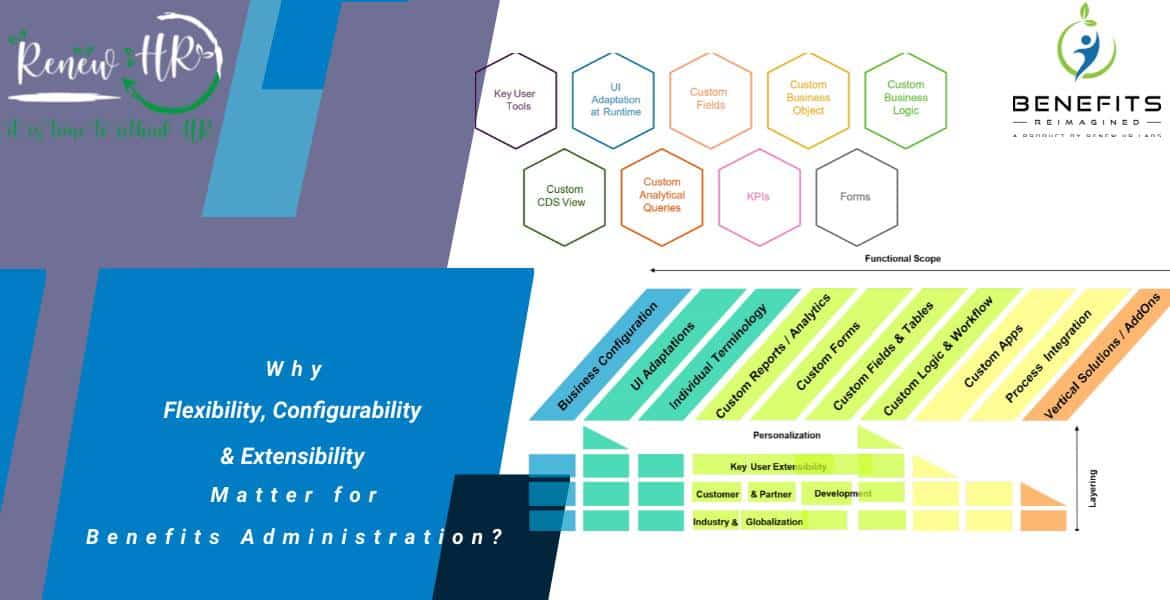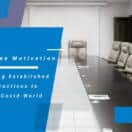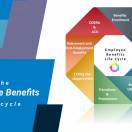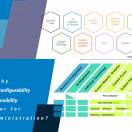SuccessFactors SAP implementations just like HR transformation is a journey, not a destination, and the start and end, unfortunately, doesn’t happen with the beginning and end of the project implementation.
You start preparing for a SuccessFactors project immediately after you sign the contract with SAP.
We recommend and suggest that you consider taking these steps before you sit down with your SuccessFactors implementation partner, will help prepare you for a successful SuccessFactors implementation.
Careful preparation and planning will lower implementation costs, reduce your risks and prevent delays. Please consider the following recommendations:
Future planning – A majority of the times SuccessFactors solutions are curated as a response to the current needs of an organization and this approach might lead to major problems in the future. It is important to understand and predict an organization’s growth structure and what type of changes might be required in the short or long term. Proper planning can help gauge the impact on the projected workforce and help to prepare, plan and design an effective solution.
Adapt to SuccessFactors process – The success of an organization is largely based on how seamlessly you can combine effective HR management processes with effective HR technology (SuccessFactors). Therefore it is important to understand and adapt to SuccessFactors best practices out of the box.
Look at the entire HR Ecosystem and beyond – Irrespective of whether you are implementing one module or multiple modules of SuccessFactors, you should consider HR as one large ecosystem. All the modules need to coexist and communicate effectively with other non-HR ecosystems of the organization for successful implementation.
Contents
Why preparation is required for SuccessFactors implementation
SAP SuccessFactors implementation or for that case any technology-led business transformation is a journey, and your preparation should begin with the end destination in mind. It is important to remember why your organization is spending so much time, money and effort in implementing SuccessFactors.
To begin the preparation, start by asking yourself some difficult questions, like:
- How is your organization going to use SAP SuccessFactors?
- What is the value proposition for employees, managers, administrators, and senior management?
- What are your organizational challenges and pain points in the current environment?
- What obstacles could you run into as the implementation moves forward?
If you are looking for answers to these questions, you can look at our blog on HR Health Check & Roadmap for guidelines and suggestions.

Communication is key during any implementation, therefore it is advisable to discuss the uniqueness, strengths and possible challenges that you foresee with your implementation partner. Since you know your business best including what has worked in the past and what would be acceptable to your business community, your inputs are indispensable.
In my experience, the more aware your implementation partner is about your business situation, the easier it gets for them to suggest and recommend the right solution for your organization.
When to Start the Preparatory Work?
The amount of time you would need depends on various factors, including the size of the organization, the number of modules which are getting implemented, the number of employees in the HR department and most importantly, how much time they can devote to the preparatory work.
On average, if the business owners are available, 3 – 6 weeks per module is a sufficient amount of time for an SMB organization to do the preparatory work. If you are planning to implement multiple modules, then these activities can also run parallelly, depending on the availability of your resources.
The two most data-intensive modules are ‘Employee Central’ and ‘Recruiting’, therefore, more time should be allotted when dealing with these two. You will find further details on this topic later in the blog.
*As Employee Central Payroll (ECP), gets implemented for a population size of 2000+ employees hence we have not taken that into account for this blog.
Technology-enabled HR Transformation
The rapid advancement of technology has changed the way HR delivers services to its customers; the employees. More often than not, the face of HR is not a person but an HR portal.
For SMB organizations these changes often result in lower HR service delivery costs and superior services to its employees. Research shows that the SMB organizations that successfully adopt sophisticated HR technology tools outperform those that do not.
Technology-enabled HR Transformation
The rapid advancement of technology has changed the way HR delivers services to its customers; the employees. More often than not, the face of HR is not a person but an HR portal.
For SMB organizations these changes often result in lower HR service delivery costs and superior services to its employees. Research shows that the SMB organizations that successfully adopt sophisticated HR technology tools outperform those that do not.

Hence it is imperative that SMB organizations determine how to use technology to transform their HR practices and market their HR brand.
Let us assume that you have picked your next piece of Core HR software (Employee Central) or Talent Management (Performance and Goals, Succession & Career development, Compensation and others) software. Now, your goal should be to plan and prepare for the transformation of your HR services by enablement (Implementation) of technology.
Once you have selected the software, I suggest that you follow the below-mentioned guidelines to prepare for your upcoming project:
- Streamline the HR processes
- Recognize and adopt SAP SuccessFactors best practices
- Understand how the Activate Implementation methodology and strategies can help with your transformation initiative
- Learn how the use of HR technology will support and enhance your service delivery
All-integrated Solution Within SuccessFactors or a “Hybrid” Approach?
In the previous segment, we discussed how technology can help SMB organization in their HR transformation journey and how they should prepare for it once the software has been selected.
All-integrated Solution Within SuccessFactors or a “Hybrid” Approach?
In the previous segment, we discussed how technology can help SMB organization in their HR transformation journey and how they should prepare for it once the software has been selected.
However, with SAP SuccessFactors, unlike other HR solutions in the market, you have multiple options. Although it is possible to implement everything at once using the integrated solution approach, you can also decide to go for a ‘hybrid approach.’ Through a hybrid approach, you can cater to your immediate needs first by selecting and implementing SAP SuccessFactors modules as per your business needs, resource and funds availability.
Each of these approaches has its share of strengths and weaknesses and must be considered when preparing for a project. Based on the approach you choose, your project preparation can be different:
Strengths
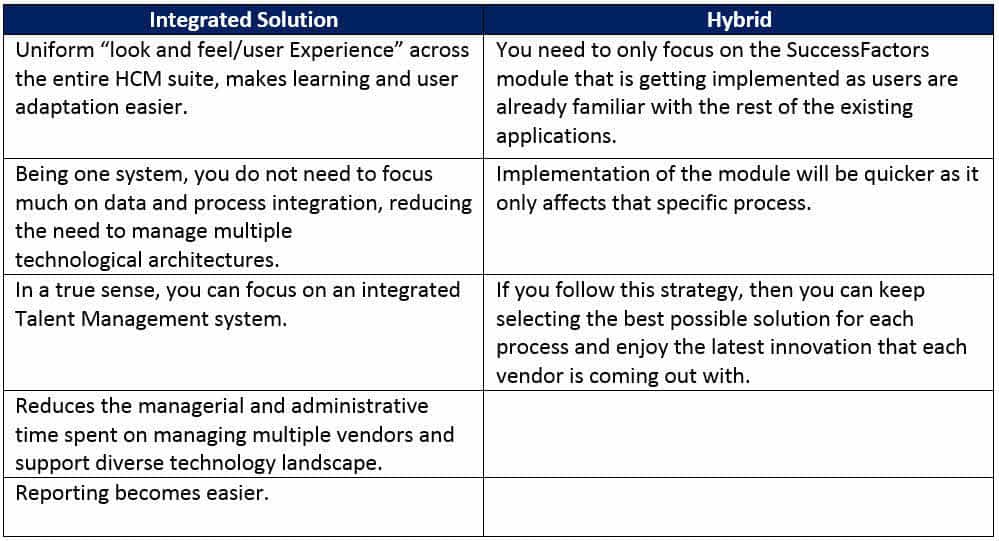
Weaknesses
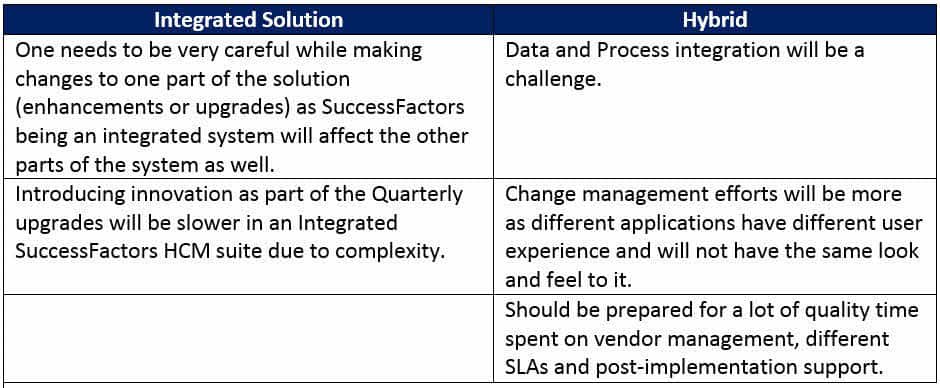
Click here to continue onto the second part of the blog: ‘How should SMB organizations prepare for SuccessFactors Implementation – Part 2?
- The employee benefits lifecycle - 04/08/2023
- Why Flexibility, Configurability & Extensibility matter for Benefits Administration? - 02/08/2023
- The communication challenges - 31/07/2023


